Prof Tim Freegarde - group leader |
Tim is a Senior Lecturer in the School of Physics & Astronomy. Born in Sheffield but raised in Dorset,
he studied at New College, Oxford and received his DPhil from the
university's laser group. After a couple of years in industry, he
returned to academia under Prof Ted Hänsch at the
Max Planck Institut für Quantenoptik after which, with a brief stop at the
European Lab for Nonlinear Optics (LENS), he moved to Oxford's
Physical & Theoretical Chemistry Lab. Following a
further two years at the Università di
Trento and a short spell at Imperial College, he came to
Southampton in 2003. His hobbies include gliding and
sailing.
|
 |
|
Joel Abraham |
Joel joined us after graduating from Southampton in 2021 to develop an atom interferometric rotation sensor (gyroscope).
| 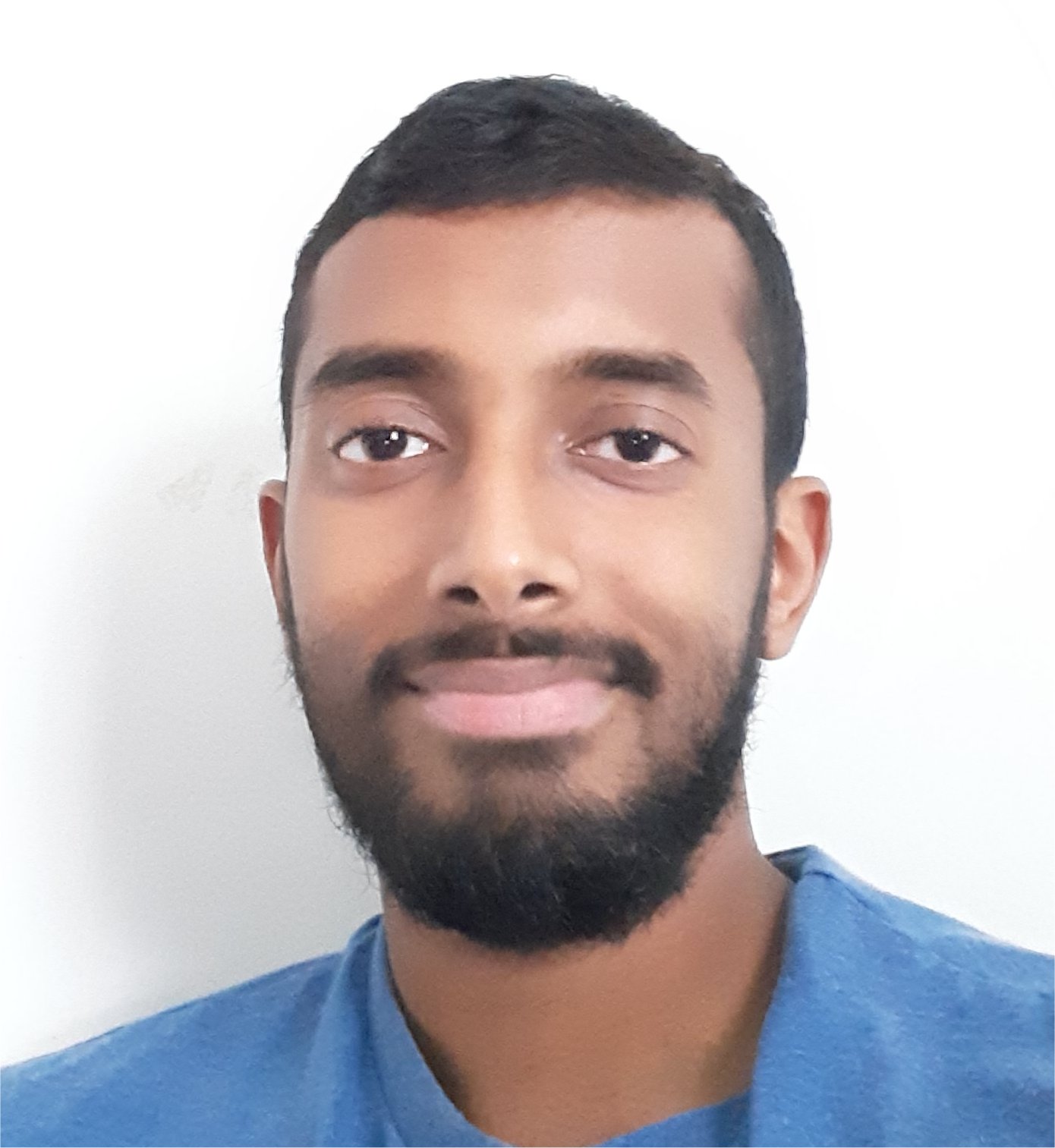 |
|
Alfie Preston |
Alfie - one of our own graduates - joined us in 2024 to miniaturize a atom interferometric rotation sensor (gyroscope), on an ICASE studentship sponsored by Thales and following the programme of the EPSRC CDT in Quantum Technology Engineering.
| 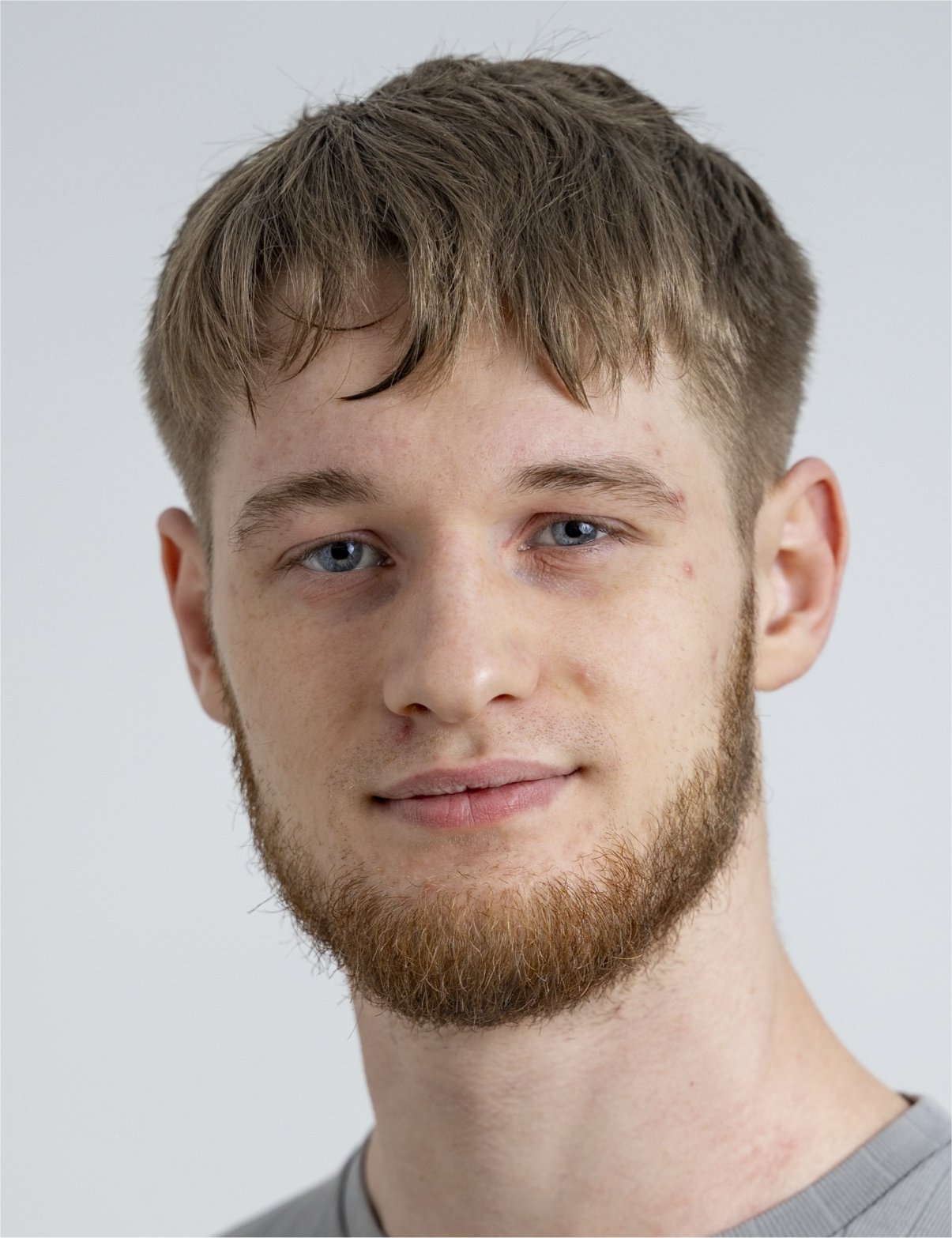 |
|
Tommy Roe |
Southampton graduate Tommy joined us in 2024 to explore a momentum-state quantum computer. He is a student in the EPSRC CDT in Quantum Technology Engineering.
|  |
|
Colleagues |
|
Dr Max Carey |
Max - one of our own graduates - joined us in 2015 to work on the quantum coherent enhancement of atom interferometric inertial sensors as part of a Dstl-funded collaboration
with the Laboratoire Photonique Numérique et Nanosciences in Bordeaux. He obtained his PhD in 2020 for his thesis 'Velocimetry, trapping and optimal coherent manipulation of atomic rubidium'. After a period of post-doctoral research, he worked for Q-CTRL from 2022-4, then joined Aquark Technologies.
|  |
|
Dr Jack Saywell |
Jack joined us from Oxford in 2016 to investigate fidelity optimization in atom interferometry and quantum computers - a project in collaboration with
Ilya Kuprov within the CDT for Next Generation Computational Modelling. He was awarded his PhD in 2020 for his thesis on 'Optimal control of cold atoms for ultra-precise quantum sensors'. After a period of post-doctoral research, funded in part by a PhD-Plus award, he joined Q-CTRL in 2022.
|  |
|
Dr Matt Himsworth |
Matt was the group's third PhD student, having spent his undergraduate years in Southampton. His specialization
in the Quantum Control group was the stabilization and locking of semiconductor diode lasers, and the spectroscopy
and manipulation of atomic rubidium. Matt was awarded his PhD in 2009 for his thesis
'Coherent manipulation of ultracold rubidium'.
Following a year as a post-doc in Axel Kuhn's
group in Oxford from 2010-2011, Matt was awarded a 5 year research fellowship from the Royal Academy of Engineering,
and returned to Southampton in 2011 to establish his own group developing enabling technologies for integrated atom chips.
He was appointed to a lectureship in 2017, and in 2019 took up a position at Dstl.
Matt continues to collaborate on our quantum control experiments, and we look forward to using his atom chips for our miniature matterwave gyroscopes.
|  |
|
Dr Mohammad Belal |
Belal joined the group in 2015 to lead the development of an atom interferometric rotation sensor,
as part of the UK National Quantum Technology Hub for Sensors & Metrology. He completed his PhD in 2011
in the Optoelectronics Research Centre's Distributed Optical Fibre Sensing group, where he continued as a research fellow for nearly 4 years, working on
various applied nonlinear fibre optics and instrumentation engineering experiments. His wide research background ranges from experimental soft condensed matter physics to optoelectronics. In 2019, Belal was appointed to a research fellowship to develop maritime applications of fibre-based sensors in the National Oceanography Centre
|  |
|
Prof Ilya Kuprov - NGCM collaboration |
Ilya is an expert in the application of optimal control to nuclear magnetic resonance (NMR) systems. He collaborates with our studies of composite pulses and
optimal control of atom interferometry, and co-supervises Jack's project within the CDT in Next Generation Computational Modelling.
| 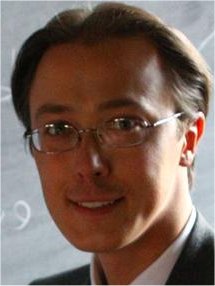 |
|
Dr Peter Horak - ORC collaboration |
A theoretical physicist from Innsbruck, Peter is one of the founding fathers of cavity-mediated cooling, and leads our theoretical
investigations into such processes.
|  |
|
Prof Kishan Dholakia - St Andrews collaboration |
Kishan leads a lively group in the Department of Physics and Astronomy
at the University of St Andrews, where he has pioneered
laser tweezers: the application
of laser beams to the trapping and manipulation of particles, atoms and biological cells.
| 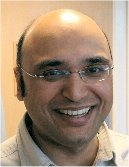 |
|
Prof Danny Segal† - Imperial College collaboration |
Danny (†2015) was a professor of physics at Imperial College - a wonderful
colleague, and a much-missed friend. His research concerned the trapping and cooling of atomic ions, and their application
to fundamental physics and quantum computation.
| 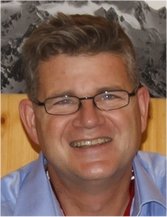 |
|
Former members |
|
Dr Nikolaos Dedes |
Niko, a graduate of the Università di Napoli, joined us in 2020 to investigate how the characteristics and performance of atom interferometers determine the performance of inertial navigation systems based upon them, on an ICASE studentship sponsored by Thales. He was awarded his PhD in 2024 for his thesis on 'Error and performance analysis of cold-atom inertial sensors for navigation', and was then recruited by his PhD sponsor as an algorithm engineer.
| 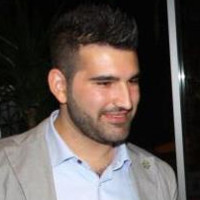 |
|
Dr Chester Camm |
Chester joined us in 2017, having spent his MPhys project attempting to make an atomic clock under Matt's supervision. He obtained his PhD in 2022 with his thesis on 'Progress towards atom interferometric measurements of gravity in a compact and integrated vacuum chamber'. He is now a quantum development engineer at Aquark Technologies.
|  |
|
Susannah Jones |
Susannah, an Exeter graduate, joined us in 2016 to develop and investigate enhancements for our cold atom interferometric rotation sensor.
| 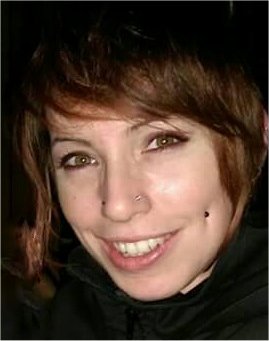 |
|
David Elcock |
David, a Southampton graduate, joined us in 2016 to to develop our cold atom interferometric rotation sensor and explore the underlying processes of atom interferometry.
|  |
|
Dr Alan Forrester |
Alan, a Glasgow graduate, joined us in 2011 and was awarded his PhD in 2017 for his thesis 'Towards fabrication of optomechanical actuators
by two-photon polymerisation', supported by Dstl. First a GIS developer with Brookfield Utilities, he is now a senior software developer at Strategic Blue.
|  |
|
Dr Rachel Gregory |
Rachel joined us from Oxford in 2011, and was awarded a prestigious Mayflower scholarship to undertake her research on
the coherent manipulation and interferometry of rubidium atoms using composite pulses. She was awarded her PhD in 2015 for her thesis on
'Phase and intensity control of lasers for atom interferometry'. After training to be a patent attorney with
Venner Shipley, she became an Intellectual Property Officer at KU Leuven.
|  |
|
Dr Alex Dunning |
Alex joined us from University College, London in 2010, and led our experiment on atom interferometry and novel
atomic cooling techniques. He was awarded his PhD in 2014 for his thesis on 'Coherent atomic manipulation and cooling using composite
optical pulse sequences', and subsequently won a
Springer Thesis Prize and saw his thesis
published. Following a couple of years in Prof Eric Hudson's group in UCLA,
Alex returned to the UK to join Base4 Innovation in Cambridge, and subsequently moved to ID Quantique in Bristol. He is now Head of Engineering at QLM Technologies.
|  |
|
Dr Nathan Cooper |
Nathan joined us from Cambridge in 2009 to work on optical cooling and trapping using nanostructured surfaces.
He was awarded his PhD in 2013 for his thesis
'Novel techniques for the trapping and manipulation of ultracold atoms'. After a couple of years at
a research assistant in the group of Prof Hendrik
Ulbricht, he moved to Nottingham in 2015 to join the group of Dr Lucia
Hackermüller.
|  |
|
Dr Jonathan Woods |
Jonathan joined us, from Exeter via Manchester, in 2011 to work on a new generation of frequency-stabilized lasers for our atomic physics experiments. He was awarded his PhD in 2015 for his thesis on
'A mode-locked diode laser frequency comb for ultracold atomic physics experiments.'
For several years in the VECSEL group of Prof Anne Tropper, Jonathan continued to work with us on a collaborative project with Qrometric Ltd
developing the spectroscopic measurement of water vapour. He now works with Southampton alumnus Andrei Dragomir for Aquark Technologies.
|  |
|
Dr Andrea Bertoldi - Bordeaux collaboration |
Andrea is a researcher at the Laboratoire Photonique, Numérique et Nanosciences in
Bordeaux, where he works on a variety of atom interferometry experiments for inertial measurement. A native of Trento, where
he studied and obtained his PhD, he was a post-doctoral researcher at LENS in
Florence and the Institut d'Optique in Paris.
|  |
|
Prof André Xuereb |
André carried out his doctoral work on mirror-mediated cooling from 2007-2010, after which he spent a year in Klemens Hammerer's group in
Hannover before being awarded a fellowship by the Royal
Commission for the Exhibition of 1851 to join the Centre for Theoretical Atomic, Molecular and Optical Physics in Queen's University, Belfast.
Originally from Malta, we like to think that the nearby Isle of Wight made him feel reassuringly at home during his years in Southampton.
André was awarded his PhD in 2011 for his thesis
'Optical cooling using the dipole force', and subsequently won a
Springer Thesis Prize and saw his thesis
published.
In 2012, André was selected to attend the prestigious
Lindau Nobel Laureate Meeting. He returned to Malta in
2014 to take up a lectureship, and subsequently professorship, in the Department of Physics at the University of Malta, where he is currently Head of Department.
|  |
|
Dr Hamid Ohadi |
Hamid spent three years as a post-doc leading our work on the optical cooling and trapping of atoms and molecules using nanostructured surfaces. Originally an ion trapper, he joined us in 2008 from Imperial College, London.
In 2011, he joined the research group of Prof Pavlos Lagoudakis, and then in 2013 moved to
Cambridge to the group of Prof Jeremy Baumberg. In 2018, he was appointed to a lectureship in the
University of St Andrews.
|  |
|
Dr Richard Murray |
Richard, our fourth PhD student, was a Southampton graduate, and worked on the coherent manipulation of cold atoms using
the phase-programmable laser and our magneto-optical trap. He was awarded his PhD in 2011 for his thesis on
'Coherent two-photon excitation within an extended cloud of Rubidium 85 for
the purposes of atomic interferometry and cooling '. After a good spell with TTP in Cambridge, Rich joined
Innovate UK (formerly the Technology Strategy Board), where in 2016 he was a co-author of the
Quantum Manifesto. After a spell as Business Development Manager for Quantum Technologies at
e2v Teledyne, he is now CEO of ORCA Computing, developing a photonic quantum computing platform.
|  |
|
Dr James Bateman |
James joined the group in 2004 as our second PhD student, following his degree at Imperial College,
London. His PhD research addressed the coherent manipulation of ultracold rubidium, the development of a phase-programmable
laser source and many aspects of experimental control, together with theoretical studies of the fidelity of the coherent
manipulation scheme, all described in his thesis
'Novel schemes for the optical
manipulation of atoms and molecules'. Following his PhD, James remained in the group and obtained a
PhD Plus award to
work on the theory of mirror-mediated cooling, and he co-instigated our project on optically driven photonic crystal actuators,
for which he was granted an Innovation Award from the Southampton Metamaterials
Programme in 2011.
After a period in the group of Prof Malgosia
Kaczmarek, James was a research assistant with
Dr Hendrik Ulbricht, before taking up a lectureship at the University of Swansea in 2015. He continues
to collaborate in particular on our work on optically-driven actuators.
|  |
|
Dr Sunil Patel |
Sunil was our first PhD student, joining us in 2003, and set up most of the major experimental apparatus. Born and bred "uup noorth"
in the Yorkshire Dales, where the puddings are battered and even the M1 is cobbled, he studied Physics at
Imperial College, London and spent a happy year as an Erasmus exchange student in
Trento, Italy.
He was awarded his PhD in 2009 for his thesis
'A chirped, pulsed laser system and magneto-optical trap for rubidium', and is now a computer guru in Cambridge.
|  |
|
Andrew Chapman |
Andrew joined us in 2013 to work on the development of laser-based water vapour detection in collaboration with Qrometric Ltd.
|  |
|
Dr Oliver Trojak |
Oliver spent the 2013-14 academic year with us, working on composite pulse techniques for the year-long project
of his Physics with a Year of Experimental Research degree. Following his PhD on 'On-chip single-photon sources for quantum information technology,' supervised by Luca Sapienza, he is currently a Research Fellow in Southampton's Solid-State Quantum Optics group.
|  |
|
Dr Claire Bléjean |
Claire spent the 2011-12 academic year with us, working on the fabrication of flexible photonic crystals for the year-long project
of her Physics with a Year of
Experimental Research degree. Following her PhD in the Cambridge group of Prof Jeremy Baumberg,
she worked for Helios and Airbus before joining Stellantis.
|  |
|
Martin Denyer |
Martin spent the 2010-11 academic year with us, working on enabling technologies for integrated atom chips for the year-long project
of his Physics with a Year of Experimental Research degree.
|  |
|
Toby Popplewell |
Toby spent the 2009-10 academic year with us, carrying out his
Physics with a Year of
Experimental Research research project on 'Tuning an external cavity diode laser with a spatial light
modulator'.
|  |

